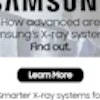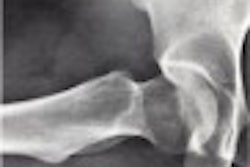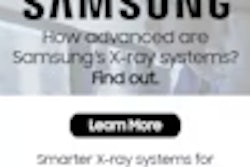(Radiology Review) Radiologists from the Hospital of the University of Pennsylvania in Philadelphia recently investigated the usefulness of barium studies for differentiating benign and malignant strictures of the esophagus.
According to their article in the American Journal of Roentgenology, the authors’ impression was that benign-appearing strictures on barium studies were almost always due to benign disease, and further investigation with endoscopy was unnecessary. However, other researchers have suggested that a radiographically benign appearance could not always be relied upon, as some cases actually were malignant.
The study population consisted of 100 patients with an esophageal stricture who underwent endoscopy and a barium meal. Fifty-seven of these patients also had endoscopic brushings or biopsy specimens. Reporting radiologists classified the strictures into three categories -- benign, malignant, or equivocal -- and these findings were compared with endoscopic and pathologic information.
The group reported that "the barium studies included 52 double-contrast esophagograms, three single-contrast esophagograms, 42 double-contrast upper gastrointestinal tract examinations, and three single-contrast upper gastrointestinal tract examinations."
Radiographs demonstrated 75 benign, 11 malignant and 14 equivocal strictures. In comparison, endoscopy showed 48 benign strictures, and the other 27 strictures thought to be benign actually were normal.
"Conversely, all 11 patients (100%) with radiographically malignant strictures had malignant tumor on endoscopy," they reported. Thirteen of the 14 patients with equivocal strictures on barium studies had benign strictures on endoscopy, while the other one (7%) had esophageal cancer at endoscopy. All 11 patients diagnosed radiographically as having malignant strictures were confirmed at endoscopy.
This study also demonstrated the value of performing biphasic examinations for optimal distension of the distal portion of the esophagus. "Of the strictures in our study, 15% were visible only on single-contrast images of the esophagus obtained with the patient prone during continuous drinking of a low-density barium suspension," the authors explained.
"We found that radiographically benign strictures in the esophagus are not shown to be caused by malignant tumor on endoscopy, so patients with these findings can be treated medically before endoscopy or endoscopic dilatation procedures are performed," they concluded. However, they qualified this statement by advising that those patients with malignant strictures or ambiguous barium studies should proceed to endoscopy with biopsy for a definitive diagnosis.
Usefulness of barium studies for differentiating benign and malignant strictures of the esophagusGupta, S. et al.
Department of radiology, Hospital of the University of Pennsylvania, Philadelphia
AJR 2003 March; 180:737-744
By Radiology Review
August 13, 2003
Copyright © 2003 AuntMinnie.com



















